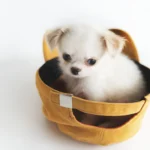Puppies, with their irresistible charm and boundless energy, often surprise us in many ways. At what age do puppies change color?. If you’ve ever gazed at your furry friend and pondered, “When will their color settle?” you’re not alone. Let’s unravel this captivating phenomenon together.
Understanding Puppy Coat Changes
At birth, puppies sport a coat color that may not be their final look. As they grow, their fur evolves, shaped by genetics, breed characteristics, and natural development. These transformations can be subtle or striking, with changes most evident in the first few months, continuing well into adulthood.
When Do Puppies Start Changing Color?
For most puppies, the magic begins between 6 and 12 weeks of age. However, the timeline isn’t set in stone. By 6 months, many puppies reveal their true colors, though some breeds keep us guessing until their first birthday or beyond.
Consider these examples:
- Dalmatians: Born pure white, they gradually develop their signature spots.
- Siberian Huskies: Their markings shift, intensify, or fade as they age.
- Yorkshire Terriers: Initially black and tan, they often transition to a stunning blue and gold.
Each breed’s journey is unique, making the process all the more fascinating.
What Causes Coat Color Changes?
- Genetics The blueprint for a puppy’s coat lies in their genes. These determine pigment distribution, leading to diverse colors and patterns as they mature.
- Molting and Shedding Puppies trade their fluffy baby fur for an adult coat through molting. This natural process can alter both the color and texture of their fur.
- Environmental Factors External influences like sunlight and nutrition also play a role. While these don’t change genetic colors, they impact coat vibrancy and health.
Breeds That Commonly Change Color
Some breeds are well-known for their chameleon-like tendencies:
- Shih Tzus: Their coats may lighten or darken over time, often surprising their owners.
- Poodles: They exhibit gradual fading, transitioning from darker shades to lighter ones.
- Labrador Retrievers: Yellow Labs can range from pale cream to rich reddish tones as they grow.
For a deeper dive into breed-specific coat changes, explore this canine genetics guide.
How to Care for a Changing Coat
To support your puppy during this transformation, follow these tips:
- Regular Grooming: Frequent brushing reduces shedding and keeps their coat manageable.
- Balanced Diet: Provide a nutrient-rich diet to nurture healthy fur. Learn more from AKC’s Puppy Nutrition Guide.
- Veterinary Check-ups: If changes seem unusual, consult your vet to rule out health concerns.
When Should You Be Concerned?
While color changes are usually harmless, certain signs warrant attention:
- Sudden or uneven changes: These could indicate skin conditions or nutritional deficiencies.
- Excessive shedding or hair loss: Allergies, parasites, or hormonal imbalances might be at play.
- Dull, brittle fur: Often linked to poor diet or underlying health issues.
If you notice anything concerning, seek professional advice promptly.
Final Thoughts
Watching your puppy’s coat transform is a heartwarming experience, a testament to their growth and individuality. Though the timing and nature of these changes vary, they are usually a natural part of development. With attentive care and a little patience, your puppy will blossom into a stunning adult, showcasing their unique beauty.
For more insights into puppy care, don’t miss our puppy grooming tips and this post




Your writing wraps around you like a warm blanket, providing comfort while challenging you to think deeper.